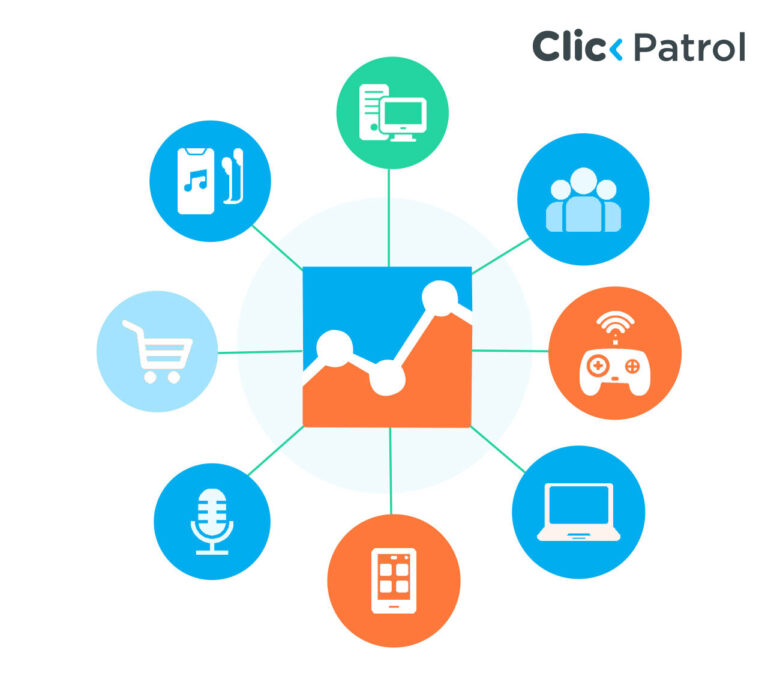
Impact of Click Fraud in Digital Advertising
Abisola Tanzako | Sep 26, 2024

Table of Contents
- Understanding click fraud
- Types of click fraud
- Financial impact on digital advertising
- Operational challenges and reduced ROI
- Role of click farms and bots in click fraud.
- Legal and ethical impact
- Impact of click fraud in digital advertising platforms
- Ways for preventing click fraud
- Looking beyond click fraud
- FAQs
Digital advertising is an effective way for businesses to reach a worldwide audience. Brands spend billions of dollars annually on online advertising, ranging from social media campaigns to search engine ads, to convert clicks into purchases and produce leads. Still, many hazards are associated with this wide-ranging environment, with click fraud being the most common.
Click fraud in digital advertising intentionally manipulates digital advertisements by creating fraudulent or deceptive clicks, often without genuine interest in the advertised good or service. This article examines the various types of click fraud, their financial and operational impact on digital advertising, the ethical and technical issues they raise, and possible countermeasures.
Understanding click fraud
Click fraud is the deliberate act of clicking on an advertisement with malicious or misleading intent. Although click fraud may have various motivations, its primary goals are to squander an advertiser’s money or produce false income. In digital advertising, click fraud is a serious problem that involves dishonest practices meant to squander advertisers’ funds and distort web traffic statistics.
It is essential to comprehend the idea, purpose, and many forms of click fraud to stop it from happening.
Types of click fraud
The types of click fraud include:
- Manual click fraud: In this kind of fraud, people manually click on advertisements to accomplish fraudulent goals. It could be done by dishonest website owners exaggerating their earnings or competitors trying to drain rival budgets.
- Bot click fraud: This kind of fraud is carried out by automated programs, or bots, that mimic human clicks on advertisements. These bots can produce a lot of false clicks quickly, making it easier to detect them with sophisticated anti-fraud software.
- Click farms: Organized teams, frequently found in areas with cheap labor, are paid to click on advertisements regularly. The amount of fake clicks these click farms may provide can significantly reduce the advertising budgets of their clients.
Publisher clicks fraud: To boost their ad revenue, website owners or publishers may click on advertisements placed on their websites. This kind of fraud uses the pay-per-click business model to produce fraudulent income.
Financial impact on digital advertising
Click fraud has significant financial repercussions, resulting in millions of dollars worth of wasted advertising spend annually. According to a 2019, click fraud costs businesses about $35 billion annually. This number most likely grew recently due to the increasing complexity of digital advertising and increased fraud schemes.
Because their advertising budgets are typically smaller, click fraud can significantly damage small and medium-sized enterprises (SMEs). A few hundred fraudulent clicks can consume their entire budget, leaving them with little more to spend on legal marketing efforts. The cost-per-click (CPC) for advertisers who are the victims of click fraud increases.
Operational challenges and reduced ROI
In addition to the financial losses, click fraud causes serious operational difficulties for marketers. The most noticeable effect immediately is a sharp decline in return on investment (ROI). Advertisers get fewer conversions because fraudulent clicks do not correspond to genuine customer interest. This results in better website traffic quality, wasted budget allocation, and efficient targeting of real potential buyers.
Click fraud can distort analytics for businesses whose marketing strategies are based on data. Businesses can optimize their campaigns with the help of performance indicators offered by online advertising platforms like Google Ads. Nevertheless, fake clicks distort this data, making it challenging for marketers to evaluate the effectiveness of their advertisements.
If an advertisement seems to be generating a lot of traffic but just a small number of conversions, the advertiser could find it challenging to figure out whether there is a problem with the campaign’s targeting or messaging or if click fraud is to blame. This uncertainty makes it difficult for organizations to make strategic decisions and may cause them to base costly decisions on inaccurate data.
When an ad campaign is flooded with fake clicks, algorithms find it harder to discern between real people, bots, or bad actors. As a result, the accuracy of ad targeting is weakened, diluting the advertisement’s exposure and decreasing the possibility of obtaining high-quality leads.
Role of click farms and bots in click fraud.
One of the most common ways that click fraud is carried out is by automated software applications called bots, which are made to look like real people. It is possible to configure these bots to click on advertisements regularly, resulting in thousands of false clicks that go undetected. The sophistication of bot traffic has increased recently, making it increasingly difficult for ad networks to differentiate between real and fake clicks.
Click farms, where employees are paid to click on advertisements manually, are another significant player in click fraud. These businesses, which are frequently located in nations with cheaper labor costs, may employ hundreds or even thousands of people who click on advertisements as part of their work. Although they are less sophisticated than bots, click farms can provide a sizable quantity of misleading traffic that harms advertising efforts.
Legal and ethical impact
Click fraud has moral implications that should not be disregarded. These kinds of actions by competitors and publishers damage trust in digital advertising while weakening fair market competition. Many businesses spend a lot of money on digital advertising because they think the clicks they pay for are real. Click fraud compromises the integrity of the advertising ecosystem as a whole.
Click fraud is typically regarded as a type of cybercrime legally. However, because digital advertising is worldwide and the Internet is anonymous, it is notoriously challenging to prosecute individuals or businesses for engaging in click fraud.
Impact of click fraud in digital advertising platforms
Click fraud hurts advertisers and has larger effects on digital ad networks. For businesses such as Google, Facebook, and Amazon, the integrity of their advertising ecosystems largely depends on their advertisers’ confidence. Businesses may reduce their investment in digital advertising if they suspect fraudulent clicks often compromise their adverts.
This would result in revenue losses for the digital advertising platforms. Major platforms have, therefore, invested in artificial intelligence and complex algorithms to identify and stop click fraud. For instance, Google identifies trends in click fraud and takes enforcement action against offenders using a combination of machine learning and human assessment. Advertisers are frequently compelled to take further precautions to safeguard their ad spending because click fraud continues to be a problem despite these efforts.
Ways for preventing click fraud
An integrated strategy encompassing digital advertising platforms and advertisers is needed to prevent and mitigate click fraud. The following ways can assist companies in safeguarding themselves:
- Use IP blocking: Many ad networks let marketers restrict IP addresses linked to click fraud. By analyzing traffic patterns and recognizing suspicious IP addresses, advertisers can reduce the harm caused by click fraud.
- Track campaign performance: It is critical to periodically examine the results of digital advertising campaigns to identify unusual activity. Click fraud may be present in a campaign that receives a lot of clicks but few conversions. Advertisers can collaborate with their platform provider to conduct further research or modify their campaigns.
- Use fraud detection software: Several third-party programs such as ClickPatrol are available to identify and stop click fraud. Using algorithms and data analysis, these solutions detect fake clicks and stop them before they affect the campaign.
- Set click restrictions: Some advertisers opt to set daily or weekly click restrictions on their campaigns to guard against click fraud and the subsequent depletion of their budget. This ensures that the total advertising budget will not be used quickly, even in the unlikely event of click fraud.
- Take advantage of Google’s invalid clicks reporting: Google Ads offers a report on clicks the platform has determined to be fake. Advertisers can use this report to monitor their campaigns for unusual activity and request refunds for fraudulent clicks.
Looking beyond click fraud
Click fraud poses a serious problem for digital advertising with far-reaching operational, ethical, and financial implications. Advertisers need to be on the lookout for click fraud and take proactive measures to reduce it, even though third-party technologies and advertising platforms provide some protection against it. The arms race between advertisers and fraudsters will continue as technology advances.
By utilizing the appropriate tactics and resources, companies may safeguard their advertising expenditures and increase the return on their digital efforts.
FAQs
Q. 1 What impact does click fraud have on my advertising spending?
Click fraud wastes your advertising budget by generating clicks that do not result in sales or leads. Every click in pay-per-click (PPC) advertising is an expense. Fraudulent clicks deplete your budget, leaving you less money to invest in real traffic and clients.
Q. 2 What are the signs of click fraud in my advertising campaign?
Here are a few typical indicators of click fraud:
Unexpectedly high click-through rates without commensurately high conversion rates.
A remarkably elevated bounce rate from your website.
A pattern of clicks from certain IP addresses or geographical areas.
Advertisements that generate a lot of clicks at strange times (particularly if the people viewing them are in a different time zone).





